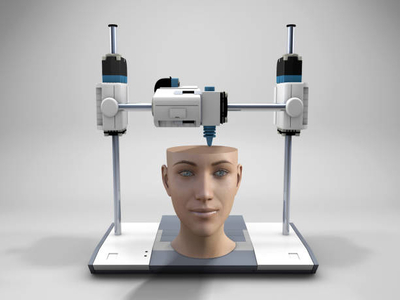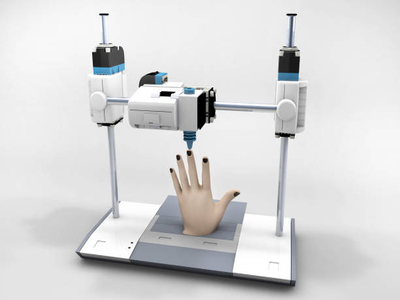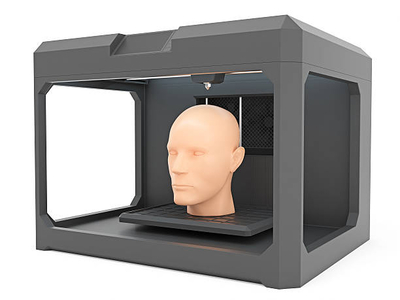Silicone, often known as polysiloxane, is a versatile and frequently used engineering material commonly used in the manufacture of rubbery goods such as sealants and adhesives.
In this post, we will discuss how you can print with silicone, the uses of silicone, and the revolution that has come from being able to 3D print with silicone.
Uses for 3D Printed Silicone
Silicone lubricants are a popular choice as they are non-toxic and chemical resistant, making them appropriate for a wide range of industrial applications.
In addition to these practical applications, silicone is commonly used to create hard resins.
3D printer companies use these resins to then make high-quality 3D prints with intricate features and smooth surfaces.
Overall, silicone is a fantastic material with a variety of uses in a variety of industries.
Whether you need a rubbery covering for your automobile engine or 3D-printed components for your next project, it is likely you will be using this flexible and durable substance.
Is it Feasible to 3D Print Silicone?

The world of 3D printing has, without a doubt, taken hold.
But to claim that it is simple to produce or is readily accessible for all 3D printing hobbyists just isn’t correct.
There are currently only a few 3D printers able to print silicone, and the cost of these devices may be prohibitive for most 3D printing fans.
Traditional PLA filament produces porous and flexible materials that have a tendency to ooze when heated.
3D printing with silicone, on the other hand, is much more challenging since the material is difficult to control.
Despite these difficulties, several firms and individuals are already experimenting with 3D-printed silicone and developing new applications for the material.
So, while 3D-printed silicone isn’t yet readily available or simple to use, it is certainly an exciting new technology to keep an eye on.
Silicone Cannot Be Printed With Conventional 3D Printers
Non-reversibility
Silicone is a manufactured material that is composed of silicon, oxygen, and other elements.
Unlike other polymers, silicone does not have the typical thermoplastic qualities of melting into a liquid at high temperatures and solidifying back to a solid when cooled.
At high temperatures, silicone maintains a solid form making silicone excellent for use in areas where high temperatures are an issue, such as automobile design.
Silicone is a high-temperature and heat-resistant material that is also moisture-resistant and electrically insulating.
As a result, it’s used in a wide range of items including sealants, adhesives, lubricants, and medical prostheses.
Solidity In Its Most Basic Form

When it comes to extreme temperatures, silicone is an excellent material with a number of advantages over other materials.
However, it is essential to remember that silicone does not 3D print quite like other filaments.
In particular, silicone’s thermal stability prevents filament-based 3D printers from functioning as solid silicone begins to deteriorate at high temperatures.
Because of this, printing with silicone on a filament-based 3D printer will produce poor print quality prints, and potentially harms the printer itself when exposed to them.
Because of this, people who want to 3D print with solid silicone will need to use a different technology, such as stereolithography or Fused Deposition Modeling.
If you go with FDM, you’ll need a top printer. Check out our FDM printer reviews.
While these technologies might be more costly and require specialized equipment, they will produce greater results with silicone.
Read More: How Much Does Filament Cost for 3D Printing? Get an idea of the costs in this guide!
Ultra Violet Resistance
Silicone is a versatile material with a wide range of uses due to its special physical properties.
It is temperature-resistant, long-lasting, and flexible, making it perfect for everything from colanders to utensils.
Silicone is also non-toxic and hypoallergenic, making it suitable for a wide range of items.
In addition to all of these fantastic qualities, silicone is UV resistant, meaning it will not deteriorate or break down in sunlight.
Because of this UV resistance, silicone is a fantastic alternative for both a new patio umbrella and a set of pool toys.
The Future of Silicone 3D Printing

Drop-on-demand (Aceo)
Although the terms “3D printing” and “silicone” may seem unrelated, Wacker Chemie AG has created a technique of 3D printing with silicone known as Aceo.
When printing in the third dimension, objects are built up layer by layer from a variety of materials such as plastic, metal, and glass.
However, because of its low viscosity, silicone was previously thought to be difficult to print with until Wacker Chemie AG’s Aceo droplet technology was created, allowing for the creation of tiny droplets of silicone.
Because of this, Aceo-printed goods may be utilized in a variety of sectors such as automotive, electronics, and medicine.
Wacker Chemie AG has already used Aceo to print everything from seals and gaskets to medical implants.
With continued progress in the field, the applications for Aceo are infinite.
Liquid Additive Manufacturing (LAM)
LAM, also known as liquid additive manufacturing, is a 3D printing process that works similarly to FDM.
LAM creates items from a variety of different materials using layering technology similar to FDM.
LAM technology, on the other hand, works with liquid silicone rather than solid filament.
This gives LAM significant advantages over other 3D printing methods in terms of finer, more complicated prints with varying Shore hardness levels.
Furthermore, LAM printers can create smooth surfaces as well as complex forms with ease and have grown in popularity as a result of their flexibility and accuracy.
Whether you are an engineer wanting to prototype your latest invention or a hobbyist interested in creating personalized presents, LAM is definitely worth looking into!
3D Printed Injection Molds For Silicone

3D printing has revolutionized the way we create and design new goods, opening up limitless possibilities for making intricate and personal items.
Despite its many advantages, one disadvantage of 3D printing is that it requires a specific substance composition, limiting it to producing things outside of silicone.
That is, until now.
With the advancement of 3D printing technology, there is a plethora of on-demand services that create flexible and durable silicone products.
All use traditional mold-injected liquid silicone and 3D-printed molds.
There are also hybrid solutions that print customized molds directly on the item and then inject liquid silicone into these molds.
By injecting liquid silicone, the mold captures not just the form, but also the texture of an object in extremely intricate detail when compared to other techniques.
3D-printed silicone is an innovative halfway point that provides designers greater freedom with flexible materials than ever before when it comes to creating products.
If you want to see it in action, watch the short video below on 3D silicone printing:
Silicone 3D Printing Costs
While the exact costs are difficult to determine, it is generally accepted that 3D printable silicone is more expensive than other materials.
This is owing to the fact that the production procedure is more complex, and time-consuming, and there is a scarcity of certain ingredients.
Because of this, only a few firms now offer 3D printable silicone at the consumer level, and pricing varies considerably depending on the source.
Silicone Qualities
Technology has advanced at an incredible speed since its inception.
We are now surrounded by a plethora of cutting-edge technologies that assist us in doing everything from communicating more efficiently to improving our health and well-being.
One particularly exciting area of technological development is liquid silicone rubber (LSR) technology.
LSR is a type of moldable material that is typically utilized in injection-molded silicone parts and has several advantages over traditional materials like plastic or metal.
It is lightweight, flexible, and highly durable, and due to its inductive moldability, it may be molded into a variety of forms
In a nutshell, LSR technologies like LAM have the potential to revolutionize a variety of sectors, from healthcare to manufacturing and beyond.
Whether we are talking about medical devices or consumer goods like computers or smartphones, LSR offers new methods for practical and cost-effective prints.
Articles You Might Want to Read